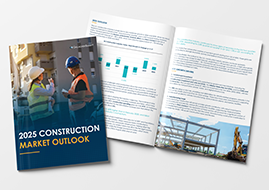By: Ryan Perryman

July 26, 2022 — The U.S. Census Bureau states that by 2030 all baby boomers will be older than 65, so that one in every five citizens will reach conventional retirement age.1 For the first time in history, the older generation will outnumber children in the U.S.2
In the past, generations of older Americans looked forward to spending their golden years in retirement soaking up sun on sandy shores or picking up new hobbies to stay busy. Today, people 65 and older make up one of the fastest-growing populations of workers in the country. Growing inflation and economic instability are forcing more workers to remain in the workforce or even reenter the workforce in order to make ends meet. Conversely, the tight labor market and higher wages are also encouraging retirees back to work. The retail industry offers a good work choice for older workers due to flexible hours, number of jobs available, light manual labor, and employee discounts.
While over half of all retail workers are ages 16-34, according to the US Census bureau, the retail industry attracts a large percentage of the older population with ~23% being over the age of 55.3As aging populations continue to grow, so too will they grow in retail and in their impact on the workers' compensation costs.
Impact of aging workforce on retailers' workers' compensation cost
As this population of older workers has increased, how has this impacted the frequency of workers' compensation claims for retailers? If we continue to see the numbers increase as projected, how can retailers work to mitigate their costs for these older worker claims?
What does GB retail data reveal?
Gallagher Bassett's (GBs) Claim distribution by Age Stratification for our retail clients found the most influential factor in workers' compensation claims is retail workers aged 60+, which increased by three percentage points over a five-year period. Retail workers aged 20 — 50 lost a percentage point or two, and claimants aged under 20 gained one percentage point. Two meaningful insights exposed are clear: claimants over 60 or under 20 are the age gaps that saw an increase, with all middling ages remaining the same or seeing slight decreases.

Accident dates 1/1/17 — 12/31/21 less than $15 claims excluded.
It's important to look at loss control efforts when you are looking at frequency changes. Since 72% of retail claims occur within the lower age group, loss control efforts are not likely to be focused on age-related factors in this sector. Moreover, for the past three years, since the emergence of COVID, loss prevention has also had to shift their attention from traditional measures to new risks, such as fraud from online pickup, overall shrink rates and an uptick in organized retail crime, which is at an all-time high.4
What impact does this have on WC costs?
Compared to the average cost for claims for retail workers less than 20 years of age, the numbers for both lost time payments and medical only climb as the age of the worker climbs, reaching as high as 151% more costly for lost time claims.

Valuation Date: 12/31/2021/Capped at $250k
What's driving the cost?
Oftentimes, older workers have been promoted over a number of years of service in management positions and generally earn a higher salary than younger entry-level employees. While the median hourly wage for retail sales work is $12.38 per hour,2 first-line supervisors can earn nearly double this amount, and those in management positions can earn over $100,000, which attributes to the overall indemnity cost.
The types of injuries and the treatment also impact the total cost of a claim. In reviewing our retail data, we saw between 5 and 10% higher duration on closed claims relative to the claimants aged less than 20 years calculated as the difference between setup and closed date.
Because employee health tends to diminish in middle life (age 55-70), the length of disability tends to increase as the employees age. In general, due to more serious health complications that come with age, older workers take longer to heal. Pre-existing physical conditions such as loss of muscle strength, decreased range of motion or flexibility, arthritis, body weight and prior joint or spine surgeries. These conditions affect the typically lifting, carrying, pushing, and reaching type motions associated with retail workplace injuries.
Chronic conditions, such as high blood pressure and diabetes, can also impact how well older workers heal. Additionally, older workers experience issues with less noticeable medical conditions, such as dementia, Alzheimer's and other nervous disorders, which can impact a person's endurance and vision, further increasing the time it takes to return to work following an injury.
What can be done to help control costs when a claim happens?
It is in the best interests of retailers to take proactive measures to mitigate the risks of accidents resulting in workers' compensation claims.
Retailers who establish workplaces that promote and support the safety of employees will be in a better position to reduce their chance of worker injury. According to NCCI, fall, slip and trip claims account for 44% of claims for those workers aged over 65 years.5 For this reason, retailers should prioritize preventative slip and fall measures in the workplace with the older worker in mind. There are simple workplace modifications that can help older workers thrive, such as installing high-quality lights to provide brighter workspaces for failing eyesight to help present slip, trip and fall claims.
When it comes to injury type, the biggest impact on "workability" for older groups of workers is related to musculoskeletal pain and ergonomic exposure according to a study conducted by PMC PubMed Central.6 Retailers should conduct frequent ergonomic evaluations and provide ergonomically appropriate work environments to reduce the risk of injury. Implementing a wearable solution can also prove to be valuable in creating awareness on when and how often employees are assuming incorrect postures. Once this data is collected customized improvements can be implements and tracked. Additionally, task rotation programs are easily implemented in the retail environment for both a prevention and return-to-work perspective for these types of injuries.
Study after study has proven that an advocacy-based claims model focused on early engagement with an injured worker builds trusts and leads to better claim outcomes, which should entice retailers to implement an early clinical intervention model. Moreover, an advocacy model ensures injured workers understand the claim process and how to navigate the system to calm fears and reduce anxieties. If an injured worker feels they are being taken care of, they are likely to return to work sooner. This is especially important for older workers, because those over the age of 45 are three times more likely to get an attorney.7 At GB, we have limited engagement clinical resources that are assigned at the time of the claim report for higher-risk cases, which is ideal for older workers who are likely to appreciate treatment plan collaboration in the direction of care. This approach also ensures a thorough evaluation of the need for further clinical intervention or whether return-to-work assistance is required. This model has proven to be effective in lowering clinical spend by as much as 10%, improving average lost workdays by 8% and the percent of claims litigation by around 52%.
In addition, monitoring medical care to evidence-based medicine (EBM) is critical to controlling workers' compensation costs. EBM is designed to assess the strength of proof behind medical interventions in terms of risk and benefits to form a clinical decision. Having an EBM approach ensures quality medical care and good clinical outcomes. Our team at GB analyzes the treatment quality by looking at the relative indication of the quality of care provided to the injured worker. Combining the power of EBM research with our wealth of claimant medical data helps us determine what percentage of medical procedures adhere to industry standard treatment guidelines. Based on the findings, we take the appropriate action to get the treatment back on track and monitor it for quality.
Another strategy to help drive down the costs of these claims is to conduct roundtable reviews with a clinical nurse or physician in attendance to ensure treatment plans are appropriate and on track. Peer-to-peer reviews can also be used when there is the need of a more in-depth discussion with the treating physician or where there are multiple providers treating multiple types of injuries. Conducting focused claim reviews or closure projects on these high-complexity claims for older workers, especially those with muscular skeletal injuries with specific plans of action, helps move the claim to closure and control development of these claims.
Conclusion
The fact that the aging workforce is growing is likely going to impact the number of older individuals working in retail in the coming years. The good news is that a lot can be done from a risk management perspective for retail businesses to prevent future problems, whether that means instituting new policies to improve mitigation or exploring a new approach to provide the necessary support for workers of an advanced age. Now is the time to improve preventative strategies (using any combination of the approaches outlined above) to control workers' compensation costs and set retail businesses up for ongoing future success.
Author
Ryan Perryman
Sources
1What Is Ahead for the Nation's Aging Workforce? (census.gov)
2Older People Projected to Outnumber Children (census.gov)
3Retail Workers: 2018 (census.gov)
4NRF | Pandemic Led to Increase in Retail Security Threats, According to NRF Study
5Insights-WorkforceDemographics.pdf (ncci.com)
6Workability in the Ageing Workforce — A Population-Based Cross-Sectional Study - PMC (nih.gov)
7Advocacy: Claimants as Consumers | Expert Commentary | IRMI.com
Make Gallagher Bassett your dependable partner
When making the right decision at the right time is critical to minimize risk for your business, count on Gallagher Bassett's extensive experience and global network to deliver.

